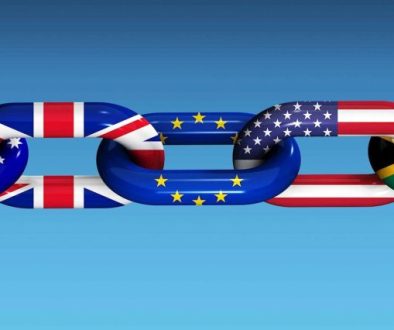As the COVID-19 pandemic entered its third year, the United States was enjoying a protracted stock-market boom, and China’s global trade surplus had reached record highs. There is reason to believe these trends will not last: notably, with the US Federal Reserve set to tighten monetary policy in the face of rising inflation, the US stock market has tumbled.
But even if market ebullience or strong exports in the world’s biggest economies were to persist, most people are experiencing hardship and angst. We must not lose sight of that, let alone of the imperative of systemic change.
In responding to the pandemic, policymakers have faced an awful dilemma: keep the economy open and risk more COVID-19 deaths, or impose lockdowns and destroy livelihoods. As the Vanderbilt University economist W. Kip Viscusi points out, one way to simplify the trade-off between the benefits of reducing health risks and the costs of economic dislocations is to “monetize” COVID-19 deaths.
Using the value of a statistical life (VSL) as the metric, Viscusi found that the cost of COVID-19 deaths in the first half of 2020 amounted to $1.4 trillion in the US and $3.5 trillion globally. Although the US accounted for 25% of deaths, its share of the global mortality cost was 41%, because richer countries have a higher VSL. An American is valued at $11 million, and an Afghan at just $370,700.
If one applies the same measure to officially reported deaths through the end of 2021 – which total about 5.6 million – the mortality cost would be $38 trillion, or 40% of global GDP. If one takes the Economist’s estimate of actual deaths – close to 17 million – that figure soars to $114 trillion, or 120% of GDP.
China approached the trade-off very differently from the US, choosing to protect lives with strict lockdowns, even at the expense of greater economic dislocations. If China had the same infection rate as the US, and the same mortality rate (slightly more than 2.9%), its total COVID-19 deaths would have reached 4.1 million, rather than the 4,849 it has officially recorded. China’s VSL of $2.75 million implies that this would have meant additional losses of $11.3 trillion, or 67% of 2021 GDP. Given that China’s economy has performed relatively well during the pandemic despite lockdowns, it seems fair to conclude that China’s approach led to lower overall costs.
In any case, the actual costs of the COVID-19 pandemic are higher than VSL scores indicate. Aggregating mortality, morbidity, mental-health conditions, and direct economic losses, former US Treasury Secretary Larry Summers and Harvard economist David M. Cutler estimate that the US bore losses of $16 trillion – the equivalent of 90% of GDP – in 2020.
Despite these high costs, the dilemma faced by a country like the US or China is less stark than that faced by poorer developing economies. With large debts and limited ability to borrow, these countries’ governments have had few options for propping up their economies. Vaccine shortages and weak health systems have left them even more vulnerable.
The International Monetary Fund recently warned that, because of the pandemic, incomes in 40 fragile and conflict-affected states are falling even further behind the rest of the world. It is not difficult to discern why: such countries lack the institutional capacity or resources to manage or mitigate social, economic, political, security, or environmental risks effectively. Already, violence is at a 30-year high globally. Fragile states – home to nearly one billion people – may account for 60% of the world’s poor by 2030.
All of this is taking its toll on the global economy. The latest edition of the World Bank’s Global Economic Prospects report cautiously predicts that global growth will slow from 5.5% in 2021 to 4.1% in 2022 and 3.2% in 2023. Behind this forecast are the threats posed by new COVID-19 variants, rising inflation, mounting debt, widening inequality, and worrying security challenges.
Economists like Viscusi, Summers, and IMF and World Bank staff measure policy options and their consequences in terms of monetary costs or GDP. But the dilemma policymakers face is fundamentally a moral one, rooted not least in the question of when individual preferences should prevail over collective interests. Moreover, despite the apparent straightforwardness of cost-benefit calculations, the pandemic is ultimately a systemic challenge that is entangled with others, from inequality to climate change.
There are no simple solutions. As Minouche Shafik, the director of the London School of Economics and Political Science, recently argued, the pandemic has made plain the need for a new social contract fit for contemporary challenges.
The old social contract had its roots in the Domination Code, embodied in Genesis 1:26, when God said: “Let Us make man in Our image, after Our likeness, to rule over the fish of the sea and the birds of the air, over the livestock, and over all the Earth itself and every creature that crawls upon it.” And yet, not all people were granted the same authority. In 1493, the Catholic Church’s Doctrine of Discovery granted Christians the right to enslave non-Christians and seize their property.
That doctrine was echoed in the US in 1823, when the Supreme Court ruled that the state had more rights than indigenous people. As the late anthropologist David Graeber and his co-author David Wengrow show, the ideas of freedom and equality that guided the European Enlightenment were shaped by Europeans’ first contact with American Indians in North America.
The social contract we need must reflect the forces and values shaping the world we live in today, including the deep interconnections among our economies and societies, the inherent value of all humans, and the shared existential challenge of climate change. Today, the choice is not to dominate or be dominated; it is to work together or perish together.



